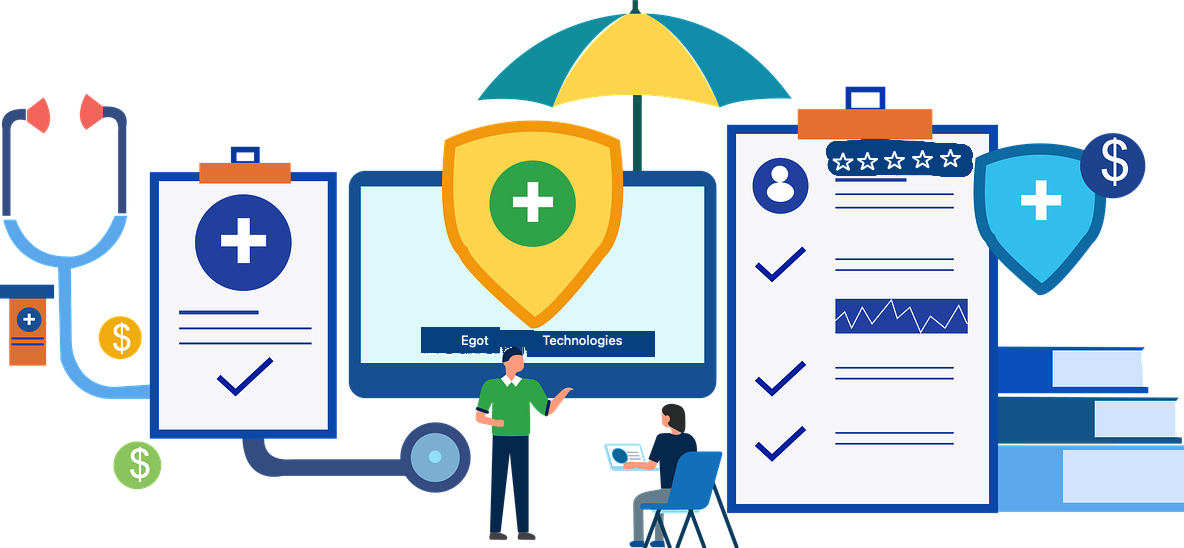Information Technology (IT) in health, often referred to as Health IT or digital health, encompasses a wide range of technologies used to store, share, and analyze health information. The integration of IT in healthcare has revolutionized the way medical services are delivered, making them more efficient, effective, and patient-centered. Here are some key areas where IT is transforming healthcare:
1. Electronic Health Records (EHRs)
- Comprehensive Records: EHRs provide a complete and accurate summary of a patient’s medical history, treatments, and test results.
- Accessibility: Healthcare providers can access patient information quickly, improving the coordination and quality of care.
- Data Sharing: Facilitates the secure sharing of patient information among different healthcare providers, which is essential for continuity of care.
2. Telemedicine and Telehealth
- Remote Consultations: Patients can consult with healthcare providers via video calls, reducing the need for in-person visits.
- Access to Care: Telehealth expands access to healthcare services, especially for patients in remote or underserved areas.
- Convenience: Patients can receive care from the comfort of their homes, which is particularly beneficial during pandemics or for those with mobility issues.
3. Health Information Exchange (HIE)
- Interoperability: HIE systems allow different healthcare organizations to exchange health information seamlessly.
- Improved Outcomes: By providing timely access to patient data, HIEs help healthcare providers make informed decisions, leading to better patient outcomes.
4. Wearable Health Devices and Remote Monitoring
- Continuous Monitoring: Devices like fitness trackers, smartwatches, and remote monitoring tools collect real-time health data (e.g., heart rate, blood pressure, glucose levels).
- Preventive Care: These devices enable early detection of potential health issues and help manage chronic conditions more effectively.
- Patient Engagement: Encourages patients to take an active role in their health and wellness.
5. Artificial Intelligence (AI) and Machine Learning (ML)
- Diagnostics: AI algorithms can analyze medical images (e.g., X-rays, MRIs) to detect diseases like cancer with high accuracy.
- Predictive Analytics: AI can predict patient outcomes, readmission rates, and identify at-risk patients, allowing for proactive interventions.
- Personalized Medicine: AI helps in tailoring treatments based on individual patient data, leading to more personalized and effective care.
6. Blockchain in Health IT
- Data Security: Blockchain technology provides a secure way to store and share health data, ensuring data integrity and privacy.
- Transparency: Enhances transparency and trust in the management of health records and clinical trials.
7. Mobile Health (mHealth)
- Health Apps: Mobile apps provide various health-related services such as medication reminders, mental health support, fitness tracking, and appointment scheduling.
- Patient Empowerment: mHealth tools empower patients to manage their health more proactively and stay informed about their conditions.
8. Clinical Decision Support Systems (CDSS)
- Decision-Making: CDSS provide healthcare professionals with evidence-based recommendations and alerts, enhancing clinical decision-making.
- Efficiency: Helps reduce errors and improve the efficiency of healthcare delivery.
9. Robotics and Automation
- Surgery: Robotic surgery systems offer precision and control, leading to minimally invasive procedures with faster recovery times.
- Automation: Streamlines administrative tasks such as scheduling, billing, and inventory management, allowing healthcare staff to focus more on patient care.
10. Big Data and Analytics
- Insights: Analyzing large datasets can uncover patterns and insights that improve patient care, operational efficiency, and healthcare policies.
- Research: Big data supports medical research by providing vast amounts of data for studies on disease patterns, treatment effectiveness, and public health trends.
Benefits of Health IT
- Improved Patient Care: Enhanced accuracy, efficiency, and coordination in healthcare delivery.
- Cost Savings: Reduced administrative costs, fewer duplicate tests, and more efficient resource utilization.
- Enhanced Patient Safety: Better monitoring, early detection of issues, and reduced errors.
- Increased Access: Broader access to healthcare services and specialists, particularly in remote areas.
Challenges and Considerations
- Data Privacy and Security: Ensuring the security and confidentiality of patient data is paramount.
- Interoperability: Seamless integration of various health IT systems remains a challenge.
- Adoption and Training: Training healthcare professionals to effectively use new technologies is crucial for successful implementation.
- Cost: The initial investment in health IT infrastructure can be significant.
Health IT is continually evolving, driving innovation and improvement in healthcare delivery. Its potential to enhance patient care, streamline operations, and support medical research makes it a cornerstone of modern healthcare systems.
Share this content:

